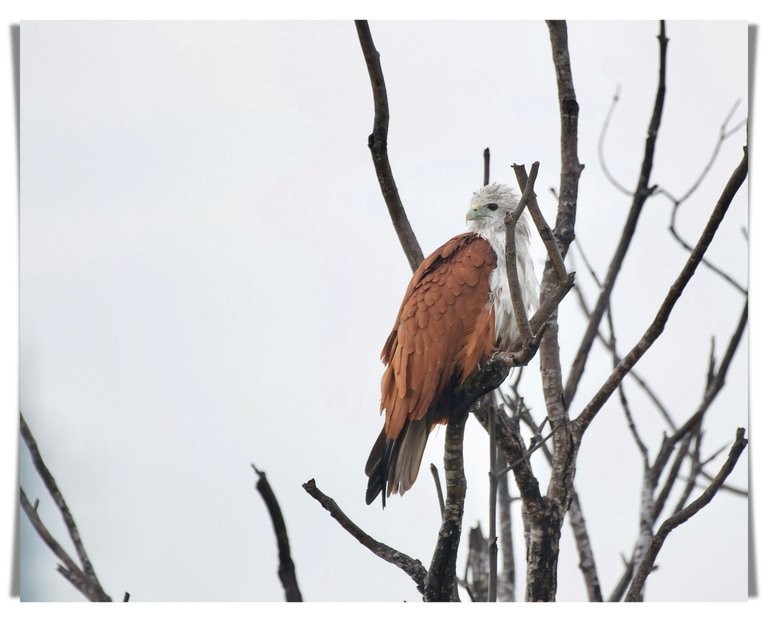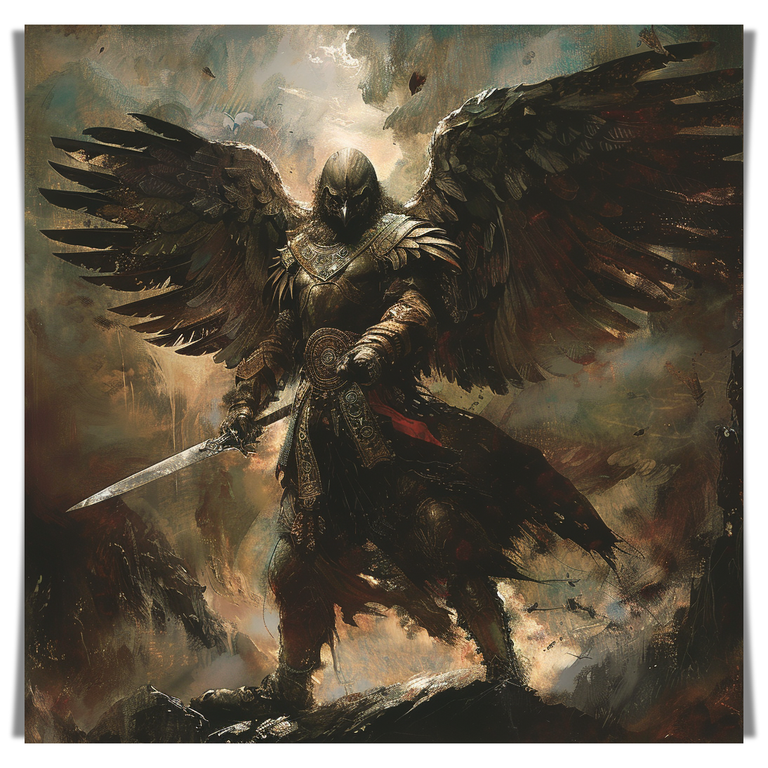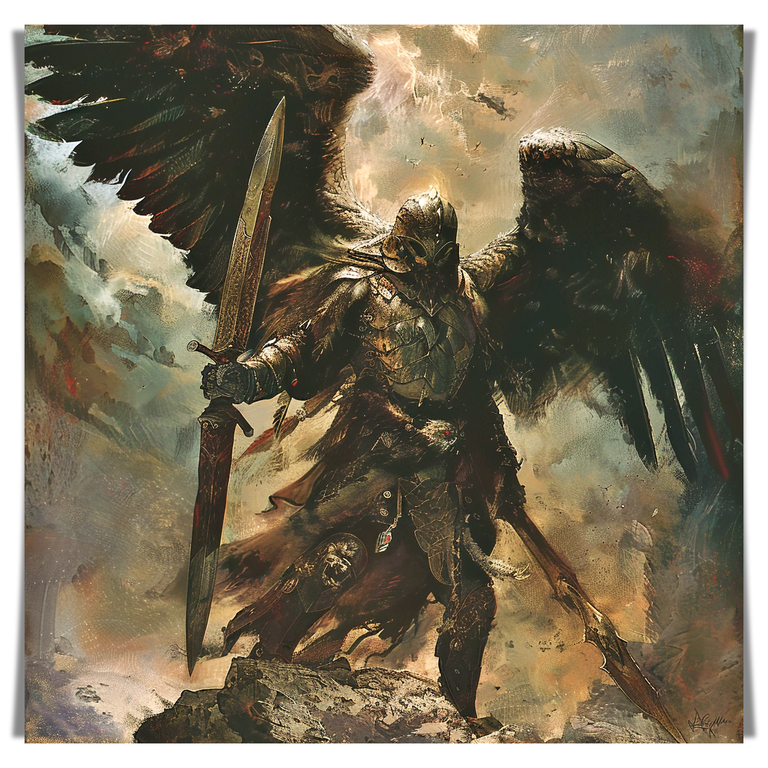Dayak Iban's Mythical Figure | Sengalang Burong the God of War, and Tracing My Ancestry To Him
It has been a while since my last participation in the ASEAN Hive Community Challenge. This week's theme has caught my attention because it revolves around local legends or myths. As a Dayak Iban of Borneo, the culture of my people boasts a rich folklore encompassing myths, epics, and histories. You might assume that I possess an extensive knowledge of these aspects, but unfortunately, I don't 😅. However, during my childhood, my dad used to narrate these folklores (known as "ensera" in Iban) to my siblings and me, though regrettably, I don't remember much.
My dad was an avid collector of books authored by the renowned Malaysian ethnologist and historian, Benedict Sandin. (Google Doodle paid tribute to the late Mr. Benedict Sandin in 2020 for his efforts in preserving the Iban heritage). I used to spend hours engrossed in these books, delving into the histories and myths of my people. Although I wish I could remember all those things I read, it has been more than 30 years since then.
Regardless, it would be disingenuous of me to claim complete ignorance about our mythology and folklore. I do have a grasp of the "basics," such as knowledge about Iban mythical figures and the "omen birds." Given the multitude of these figures, I will share just one for the sake of this post.
🦅 Iban's God of War, Sengalang Burong 🦅
One such mythical figure that stands out prominently in our mythology is the god of war, Sengalang Burong. This mythical creature is not only a fascinating element of our folklore but also a symbol deeply embedded in our cultural identity. Do you believe that I could trace my ancestry to Sengalang Burong? More on this later. It might sound absurd to some, but the Iban genuinely believes in this, treating it with deep honor and reverence.
Sengalang Burong hails from the mythical realm in the sky, Tansang Kenyalang, which means the Hornbill's Nest. He would assume the form of a Brahminy Kite (red-backed sea eagle) whenever he came down to the earth and communicated with humans.
Here's a picture of a Brahminy Kite. I've never seen one in my life but I heard so much about this eagle.

Sengalang Burong was the eldest among seven siblings, born to Raja Jembu (King Jembu) and his wife, Endu Dara Saur. All of Raja Jembu's children possess divine powers that influence the events in this world. As the eldest, Sengalang Burong stands as the most revered mythical figure among the Ibans. Serving as the god of war, the Ibans would seek his guidance before embarking on any head-hunting wars against neighboring tribes. Sengalang Burong also oversees the communication between the gods residing in Tansang Kenyalang and humans. He manages this communication through a complex system of omens, thus involving the use of "omen birds."
🦅 The Omen Birds 🦅
God gives instructions to humans by dispatching birds or animals bearing messages that either sanction or disapprove of human activities. The primary messengers are the 8 omen birds, among whom 7 are sons-in-law, and the eighth is a friend of Sengalang Burong.
The names of the omen birds are Ketupong, Beragai, Pangkas, Bejampong, Embuas, Kelabu Papau, Burong Malam, and Nendak. Interestingly, all of these are actual birds that inhabit the rainforests of Borneo. Unfortunately, my knowledge is limited, and I hesitate to delve into the specific roles of each bird to avoid providing potentially misleading information. (The Ibans are very proud of their heritage and quite sensitive to such misleading information thus I should shut up).
The Ibans traditionally sought guidance from these omen birds when making important decisions such as starting a new farming venture, constructing a new longhouse, or addressing various aspects of life.
On a lighter note, here's a fascinating fact about my family: my parents once had to cancel the adoption of a baby boy due to an encounter with an omen bird on their way to pick up the child. Seeking advice from a shaman, they were warned to abandon their plans, as proceeding could bring misfortune to our family. This incident is a true story that happened when I was around 11 years old.
Here is an AI-generated image of the god of war, Sengalang Burong. I utilized AI to create this picture because I was unable to find an appropriate image to depict him. I trust that sharing this image won't ruffle anyone's feathers 🤷♀🙏.

Image source: Leonardo AI
🦅 Tracing My Ancestry to Sengalang Burong 🦅
We, the Ibans, take great pride in our heritage, particularly in the significant practice of tracing our ancestry ("tusut"). However, we lack a written system to document our myths, legends, folklore, or genealogy. Instead, we relied on oral tradition to pass down our cultural narratives to the next generation. Over hundreds of years, we have skillfully interwoven the elements of myths and folklore into the fabric of our ancestral history and genealogy.
You can find my maternal family tree on this link.
Here's the section that mentioned my parents and siblings.
However, this genealogy is not exhaustive. I think this list was last updated in 2009.
Here's another AI-generated image of the god of war, Sengalang Burong.

Image source: Leonardo AI
What are your thoughts on this post? I hope you've gained some insight into my people, the Dayak Iban of Borneo. Despite my limited knowledge of our cultural history, I am eager to share more about certain aspects of our culture someday 🙏.
That's it for now. If you read this far, thank you. I appreciate it so much! Kindly give me a follow if you like my content. I mostly write about making art, life musing, and our mundane yet charming family life here in Klang Valley, Malaysia.
Note: All images used belong to me unless stated otherwise.


Cool & interesting! Hope to visit Borneo sometime, but after I had my 2 agencies go belly up after 2020 I'll be travelling on a shoestring only, while earning what I need to eat using platforms like Hive :-)
Birds have the role of warning people in many, perhaps even most, cultures. I've also experienced it myself once when I had a bird flying over me screeching, right then I just knew I had to call my girlfriend at the time, that turned out to be just the right moment! Nothing serious, but definitely a connection...
During that time I had birds flying around 24/7 too as it was a coastal town, so "something" was conveyed at that particular time :-)
Augury was a common practice among the Romans, as you mentioned; however, birds are frequently used to seek omens.
You are always welcome to visit Sarawak/Sabah (the Malaysian side of Borneo). The vibe here is different, unlike the situation in Peninsular Malaysia, where interactions among Malaysians tend to be highly polarized.
⋆ ᴛʜᴇ ᴘʟᴀᴄᴇ ғᴏʀ sᴏᴜᴛʜᴇᴀsᴛ ᴀsɪᴀɴ ᴄᴏɴᴛᴇɴᴛ ᴏɴ ʜɪᴠᴇ
⋆ sᴜʙsᴄʀɪʙᴇ ᴛᴏ ᴛʜᴇ ᴀsᴇᴀɴ ʜɪᴠᴇ ᴄᴏᴍᴍᴜɴɪᴛʏ
⋆ ғᴏʟʟᴏᴡ ᴛʜᴇ ᴀsᴇᴀɴ ʜɪᴠᴇ ᴄᴏᴍᴍᴜɴɪᴛʏ ᴠᴏᴛɪɴɢ ᴛʀᴀɪʟ
⋆ ᴅᴇʟᴇɢᴀᴛɪᴏɴ ʟɪɴᴋs 25 ʜᴘ⇾50 ʜᴘ⇾100 ʜᴘ⇾500 ʜᴘ⇾1,000 ʜᴘ
I liked your post and it was interesting. We should know about cultural history. The pictures were great. Thank you for sharing.
I'm glad you liked it. Thank you.
Dayak in Malaysia might be brothers with Dayak in Indonesia. it is known that Dayak has supernatural power, the tradition that most people afraid is the red bowl tradition. it is a war signal to all Dayak tribes in all Borneo Island
Yes, we share a common cultural heritage, language, and a traditional belief system rooted in animism. The Dayak community is further segmented into various sub-ethnic groups such as the Ibans, Ngaju, Apokayan, and Penan.
I learned about the Red Bowl ritual during the Dayak-Madura conflict in 1997. Although it may be hard to believe, I am convinced of the supernatural powers harnessed by the Dayak warriors during that conflict. This belief contributes to the fearsome reputation of the Dayaks in wars and battles, since time immemorial.
Remarkably, even in Malaysia, numerous Ibans actively enlist in the army and are frequently selected as frontliners in combat due to their exceptional fearlessness. It comes as no surprise that the Malaysian army slogan is "agi idup, agi ngelaban," (in Iban) translating to "as long as I live, I shall fight."
Congratulations @coloringiship! You have completed the following achievement on the Hive blockchain And have been rewarded with New badge(s)
Your next target is to reach 5500 replies.
You can view your badges on your board and compare yourself to others in the Ranking
If you no longer want to receive notifications, reply to this comment with the word
STOPCheck out our last posts:
"as long as I shall live, I shall fight!"truly heroic and brave.
I guess our ancestors seem to have similarities specially with the tribes. We have a lot of myths and legends as well.
That's quite a tale, a very interesting one. Sounds like some of these characters could've easily challenged the Greco-Roman gods on the other side of the world. Those AI images of him could haunt a person's dreams.